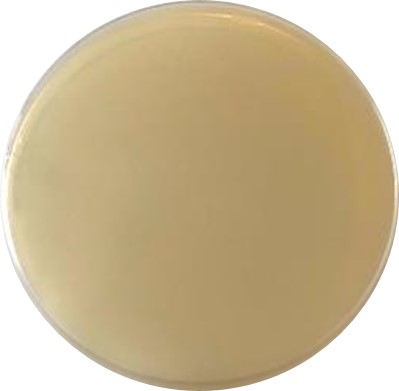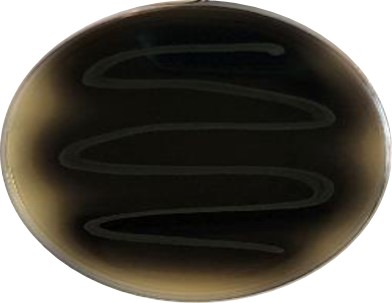14.6: Isolation an Identifiation of Enterococci
- Page ID
- 123471
The enterococci may be isolated and identified using various selective and differential media.
Bile Esculin agar
Unlike most bacteria, the enterococci will grow in the presence of the bile salts in the medium. The sodium azide in the medium inhibits the growth of Gram-negative bacteria. Enterococci will hydrolyze the esculin, producing esculetin which reacts with the iron salts in the medium turning the agar black (see Fig. \(\PageIndex{1A}\) and \(\PageIndex{1B}\)).
|
Fig \(\PageIndex{1A}\): A Plate of Uninoculated Bile Esculin Azide Agar |
Fig. \(\PageIndex{1B}\): Enterococcus faecalis Growing on Bile Esculin Azide Agar |
|---|---|
 |
 |
| Enterococcus faecalis growing on a Bile Esculin Azide Agar plate showing the hydrolysis of esculin which turns the agar black. | |
| Copyright; Gary E. Kaiser, Ph.D. The Community College of Baltimore County, Catonsville Campus CC-BY-3.0 | |
On blood agar, most strains of Enterococcus faecalis show gamma reaction on sheep blood agar, however some strains exhibit beta hemolysis. Colonies are usually 1-2 millimeters in diameter. Enterococci are also being identified using chemiluminescent labelled DNA probes complementary to species-specific bacterial ribosomal RNA (rRNA) sequences.
Contributors and Attributions
Dr. Gary Kaiser (COMMUNITY COLLEGE OF BALTIMORE COUNTY, CATONSVILLE CAMPUS)

